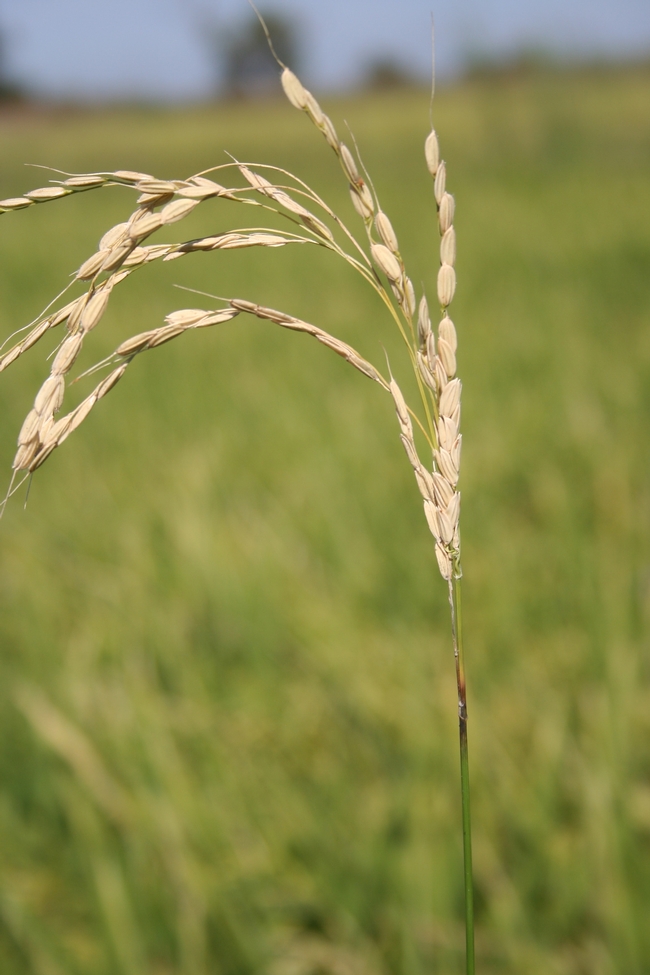The last time we saw a severe blast epidemic was 2011. Since then, we haven't had much blast; in fact, I had not see any blast at all during several years. I don't think 2019 qualifies as a severe blast year, but there is more blast than in the previous few years.
Blast is caused by a fungal pathogen, Pyricularia oryzae. This fungus can affect any plant part, and usually we refer to blast according to the tissue affected. Leaf blast, node blast, collar blast, and neck blast (when it affects the node right below the panicle) are all caused by the same pathogen.
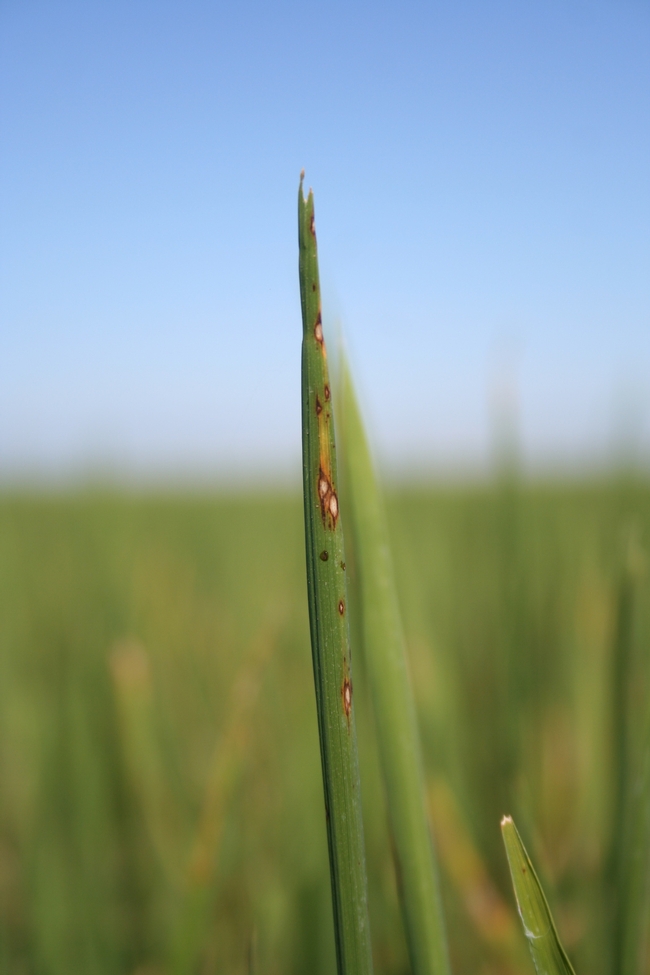 |
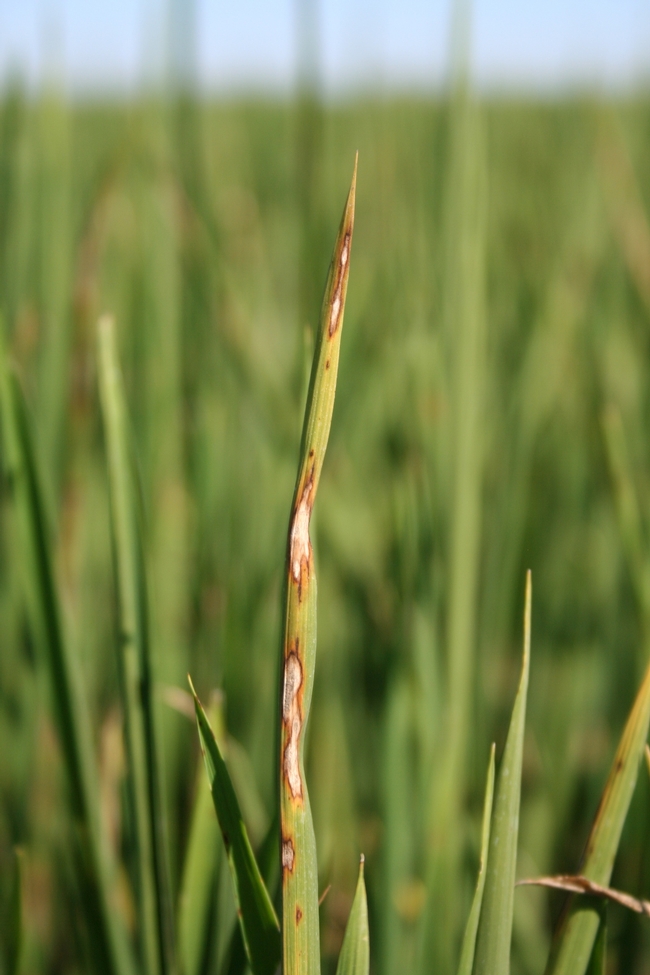 |
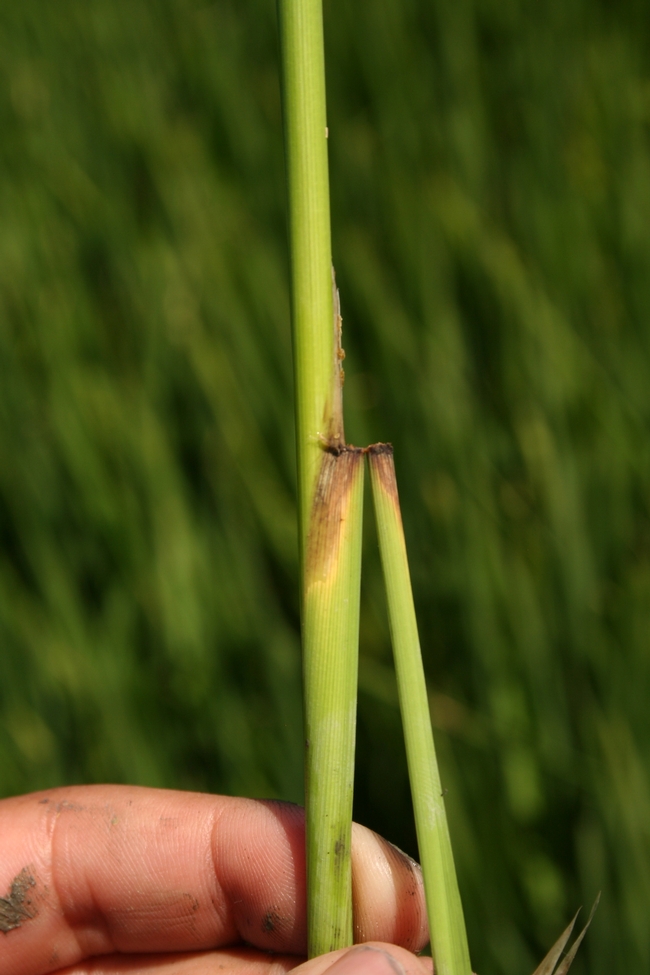 |
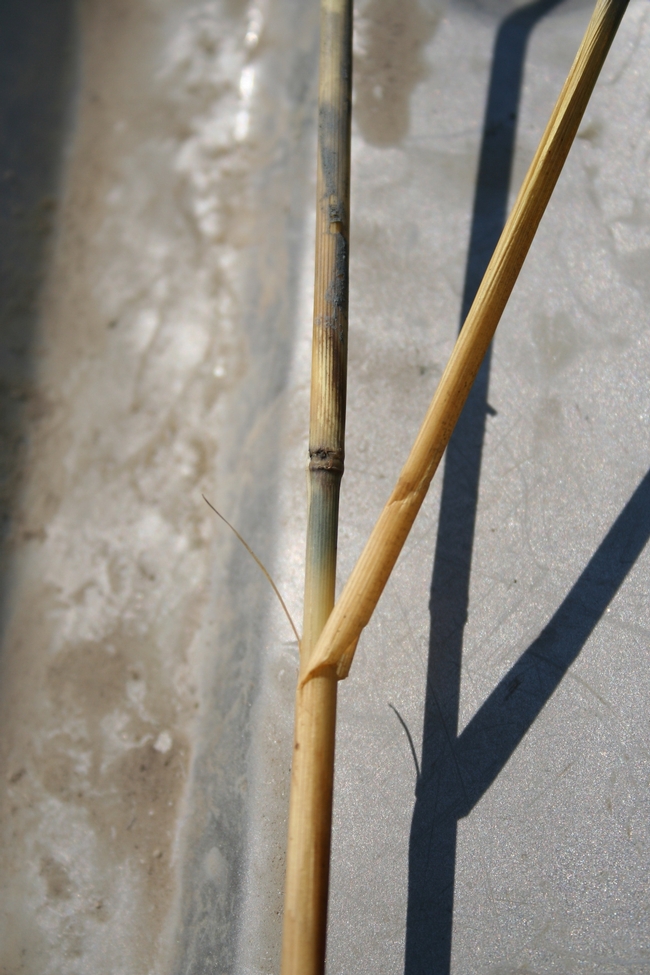 |
Typical and larger leaf blast lessions, collar and node lessions.
Neck blast
Blast can surive in crop residue, move with seed, and move between fields by producing airborne spores called conidia. In California, we typically see leaf blast starting at mid tillering. Blast infection at this time causes leaf lesions that in severe cases can burn plants to the water level. However, most of the time these severe symptoms are limited to small areas of the field. During heading, neck blast can cause empty heads when infections occur soon after the panicle emerges from the boot.
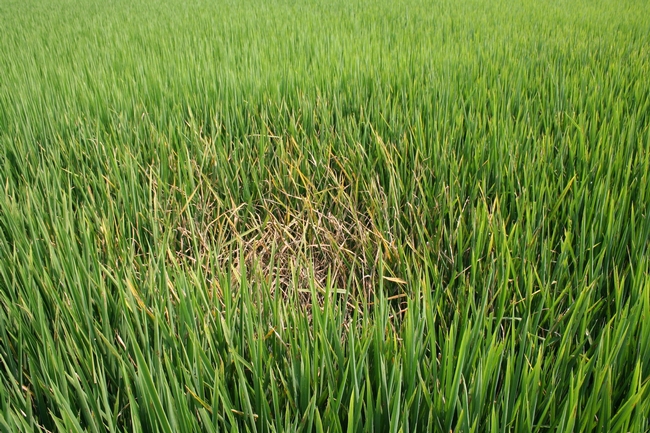 |
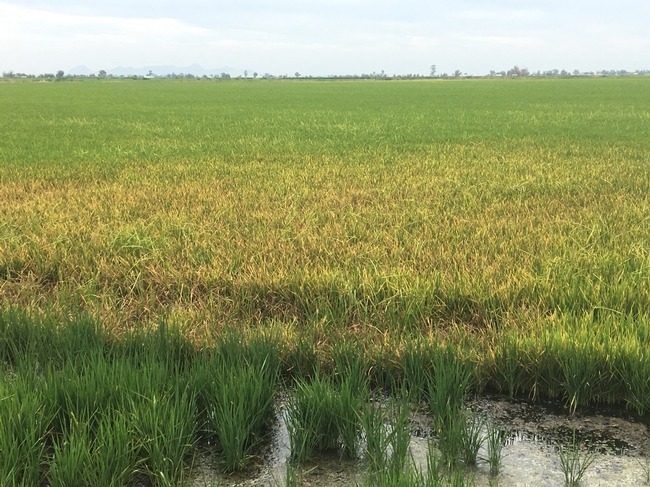 |
Left, leaf blast that has burned plants to water level in circular pattern. Right, larger area of field affected with leaf blast.
Several factors favor blast development. Moderate warm daytime temperatures, cooler nights, and long periods of leaf moisture are good for blast development. High nitrogen rates tend to aggravate blast, and typically one can see blasted circles where plants have been killed to the water level in areas of aqua overlap. Draining fields during the season increases the risk of blast infection.
Of the rice varieties grown in California, M-205 and M-104 were considered more susceptible than M-206. Variety M-205 has been replaced by M-209, which was released in 2015. Since there hasn't been much blast pressure in the past few years, it was not known how M-209 was going to react to blast. This year seems to indicate that M-209 might be more susceptible to blast than M-206. I still have not heard much about M-105, the M-104 replacement released in 2011. Variety M-210, released in 2018, is resistant to the blast races present in California.
If leaf blast is very severe, a fungicide application may be appropriate. However, this level of disease is uncommon under our conditions. Leaf blast does indicate the need to protect the panicles during heading with a fungicide application at about 50% heading.
